Written by Karel Minor, Humane Pennsylvania President & CEO
 A drowning man may be forgiven for not reflecting on the size of the body of water in which he’s drowning. After all, drowning in the ocean, a lake, or a bathtub is still drowning. The volume of the body of water is irrelevant when you’re inhaling it and trying your best to survive.
A drowning man may be forgiven for not reflecting on the size of the body of water in which he’s drowning. After all, drowning in the ocean, a lake, or a bathtub is still drowning. The volume of the body of water is irrelevant when you’re inhaling it and trying your best to survive.
But let’s say this proverbial man is in a bathtub and that bathtub has been draining steadily, yet he’s still crying out that he’s drowning. Suppose we say to him, “Hey, buddy, there’s only four inches of water in that tub. Try lifting your head up,” and he responds, “Last year there was two inches, so there’s twice as much water now, and it only takes an inch of water to drown!” Would we be wrong to wonder why he insists on drowning, splits statistical hairs, and engages in pedantry over methods and means of drowning, rather than acknowledging that he’s very definitely flailing in a puddle, not in an ocean?
I think this is an apt metaphor for what has happened this year in animal sheltering. You’ve probably seen the headlines screaming that shelters are overrun and facing massive percentage increases in intake. Many of these headlines resulted from press releases of shelter data that showed double-digit percentage increases in shelter intake and euthanasia (note that “percentage” was twice emphasized). According to the news, and many, many voices in animal welfare, shelters are drowning in an ocean of animals and that ocean has become profoundly deeper- just look at that double-digit statistical increase over three years ago!
I’m here to tell you that those statistics are true. But the narrative they imply is a lie.
Someone clever once said there are three kinds of lies: Lies, damned lies, and statistics. And the heavy use of statistics over numbers, and in a vacuum of context, is often a good indicator of which kind of lie it is. In May 2007, I posted a blog under that title announcing that HPA (then Berks Humane) would be the first sheltering organization in Pennsylvania to post its raw shelter intake and outcome data. I made the case that animal shelters were then using statistics to make their circumstances and outcomes seem better than they were.
Today the opposite appears to be the case. The broader sheltering community is using carefully selected statistics with carefully chosen time spans to make things appear worse for shelters than they are. These statistics are often taken from the Shelter Animals Count reporting, the largest publicly available aggregation of intake and outcome data. They reported that in the first half of 2024, “live outcomes” outcomes for approximately 3.8 million cats and dogs entering shelters was 91% for cats and 90% for dogs.
Sorry, did I bury the lede? Allow me to scream that like it should be screamed, “Fewer than 10% of shelter cats and dogs died in shelters making America a No-Kill nation!” Why isn’t that the headline? If this had happened ten years ago, or in 2007 when I warned of squishy statistics hiding bad news, I feel like we’d have had an explosion of positive press. Instead, we get told of all the ways animals are worse off.
Here’s the deal: All of these statistics are compared against the aberrant intake numbers that occurred during COVID when shelters essentially closed their doors to the public (and, no, it was NOT a huge number of adoptions that led to empty kennels covered by the press, it was caused by locked doors). That precipitous 2020 decline took a couple of years to rebound back up by 2023. But 2023 was lower than the numbers pre-COVID. In fact, the number of animals entering shelters and dying in shelters has been on the decline for the past 50 years, from shelter deaths of 15 million or higher to only 850,000 in 2023. If that’s the case, why can anyone be claiming double-digit increases, and what do I mean by “only” 850,000? That seems like a lot of dead animals.
That’s one of the problems with success and one of the problems with the arbitrary 90% save rate defining no-kill status promoted so heavily by some national groups. First, if we want to know if 90% is no-kill, don’t ask the 9 out of 10 animals that lived, ask the one that died in a shelter. I bet that one feels like it wasn’t a no-kill shelter. The definition of “No-Kill” has always come with troublesome baggage. How do we define killing and what’s real euthanasia? When we were drowning in an ocean of dead shelter animals, we could be forgiven if we didn’t quibble over percentages while we tried to tread water. But now we are in a bathtub arguing over what counts as drowning and still clinging to the old press terror tactics our industry has relied on for decades.
Second, numeric success can fuel statistical failure. Saving 90% of a million animals might be considered no-kill, despite 100,000 dead animals. But what happens when the number drops really low? What if only two animals enter a shelter and one is euthanized? That’s a 50% euthanasia rate. It’s also 99,999 fewer than the one that achieved 90%. I know what community I’d rather live in.
We see these games played with crime statistics on the news. We have historically low crime so any blip of a low number yields large percentage increases or decreases. But numerically it’s not relevant. The whole, good, picture is lost in the statistical trickery. Is that a lie? It might depend on intent, it might be due to ignorance, or it might be lazy journalism. You decide.
To be clear, some parts of the country are much worse off than others. And if you are a euthanized animal or the victim of a crime, your rate of death and crime are 100%, and big pictures or long-term trends are cold comfort.
No-kill advocates used to berate “open-admission” shelters for their high intake and euthanasia rates and compare them against their artificially low managed intake numbers and low euthanasia rates that came courtesy of screening out problematic animals. Now “open-admission” shelters are using statistical variation to berate no-kill shelters for not doing enough to help them handle their tsunami of incoming animals. Both play games with semantics, definitions, and statistics and neither narrative has ever been truly and fundamentally honest. No-Kill shelters have always employed some measure of intake management. And open-admission shelters have never taken in every single animal presented to them. Do “Sorry, no ID, not our municipality, it bit within the last ten days, we can’t reach the owner, etc.” ring a bell?
I believe both sides of this argument suffer from the same problem of lack of imagination and inability to see the forest for the trees. An arbitrary 10% death rate is assuredly not no-kill. But a few percent up and down variation off a historically low number is not drowning in animals and certainly not a return to 1970/80/90/2000 numbers. Instead of agreeing that we have made amazing progress as an industry and a nation, but we still have work to do, we keep fighting the same battles, using the same tired and outdated arguments. Only now it is “open-door” shelters using statistics to make things look worse than they are and no-kill shelters under fire for Pollyanna claims of success while standing on a pile of dead animals.
We should not accept that any level of death in shelters is OK, even if most people can agree that some may be unavoidable or even appropriate. Sometimes euthanasia is the right choice to prevent suffering but it’s certainly not successful. We also shouldn’t pretend that every shelter death is unavoidable or appropriate. Some shelters are just bad at their jobs. Now no-kill shelters are trapped by a definition of success that doesn’t ring true to the real world. Open-door shelters are trapped in an existential crisis. What do all these shelters do when there are 90% fewer animals entering shelters than 50 years ago?
Humane PA saw this March of Dimes moment- when the problem you combat is solved- coming nearly two decades ago and we started to expand what we did to include a myriad of ways to help animals and people other than just being the dump for community animals. We have a small fraction of the intake and shelter death we did twenty years ago, but it’s still not zero. Others can and have found new directions and approaches of their own. Many still cling desperately to rigid, old models, and will survive for a while. Some organizations may, and probably should, dissolve.
Metaphors are useful because they allow a person to “get” your point via a example that is more universally understood or experienced without having to engage in extensive exposition and explanation. If I may be forgiven beating this drowning metaphor to death, if shelters were people and they were drowning, what might they do? If someone was swimming with other people they might call for- and accept- help. If someone found herself in a rip current, she might change her approach, stop trying to swim back to shore, and instead swim across the current until the rip current subsided and her old swim strokes were once again effective. Sometimes one might find himself not swimming, but being carried away in deadly floodwaters. But floods are rare and they are transient. We should never claim every swim is in a flood, any more than we should mistake a bathtub for an ocean. And finally in this tortured metaphor, if people can’t swim, maybe they should stay out of the water.
Unlike English poet Stevie Smith’s “larking chap”, most shelters aren’t drowning, they’re waving.


 Dr. Alicia Simoneau’s 15-year journey with Humane Pennsylvania has been marked by a deep commitment to animal welfare and an unwavering passion for her work. As she celebrates this milestone, it’s clear that Dr. Simoneau’s contributions have been pivotal in shaping the compassionate and dynamic environment that defines Humane Pennsylvania today.
Dr. Alicia Simoneau’s 15-year journey with Humane Pennsylvania has been marked by a deep commitment to animal welfare and an unwavering passion for her work. As she celebrates this milestone, it’s clear that Dr. Simoneau’s contributions have been pivotal in shaping the compassionate and dynamic environment that defines Humane Pennsylvania today.
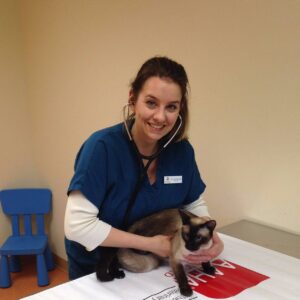 What’s one thing you’re learning now, and why is it important?
What’s one thing you’re learning now, and why is it important?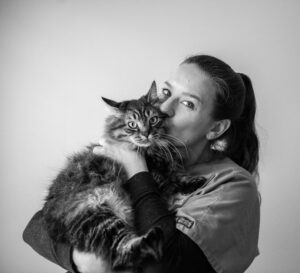
 Creating a legal will is an opportunity to craft intentional plans that protect your loved ones and eternalize the values that have guided your life, like compassion and caring for animals in need. Legacy support is an easy way to be a part of the solution for years to come.
Creating a legal will is an opportunity to craft intentional plans that protect your loved ones and eternalize the values that have guided your life, like compassion and caring for animals in need. Legacy support is an easy way to be a part of the solution for years to come. After spending over 30 years in the animal welfare world, Humane Pennsylvania (HPA) President & CEO Karel Minor knows a thing or two about helping animals and their caretakers who love them. As the second longest-tenured leader in animal sheltering in Pennsylvania, he is looking back at the progress made and strides taken over his 20 years as CEO of Humane PA.
After spending over 30 years in the animal welfare world, Humane Pennsylvania (HPA) President & CEO Karel Minor knows a thing or two about helping animals and their caretakers who love them. As the second longest-tenured leader in animal sheltering in Pennsylvania, he is looking back at the progress made and strides taken over his 20 years as CEO of Humane PA. be done, usually with no real data to back it up, just opinion and gut feeling. Animal welfare felt hopeless and fatalistic and if you suggested we could save animals’ lives and help people try new things, our peers looked at us like we were stupid. If you suggested adopting cats at Halloween, waiving adoption fees, or adopting at Christmas, people thought you were insane. Twenty years ago, when I started at HPA, which was known as Berks Humane Society at that time, I met a core of staff, board, volunteers, and donors who were willing to be open-minded. They saw that what we had been doing wasn’t working- at least not for the 4,000 animals being euthanized each year- and they took the risk with me to try new and even taboo approaches. It worked, we kept it up, and we helped spread that attitude around the country.
be done, usually with no real data to back it up, just opinion and gut feeling. Animal welfare felt hopeless and fatalistic and if you suggested we could save animals’ lives and help people try new things, our peers looked at us like we were stupid. If you suggested adopting cats at Halloween, waiving adoption fees, or adopting at Christmas, people thought you were insane. Twenty years ago, when I started at HPA, which was known as Berks Humane Society at that time, I met a core of staff, board, volunteers, and donors who were willing to be open-minded. They saw that what we had been doing wasn’t working- at least not for the 4,000 animals being euthanized each year- and they took the risk with me to try new and even taboo approaches. It worked, we kept it up, and we helped spread that attitude around the country.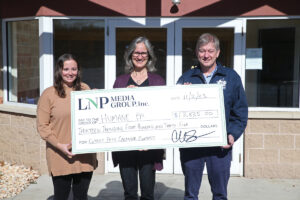 My greatest influence in animal welfare is Dr. Michael Moyer, who hired me at my first shelter 32 years ago. Back then, he was the extremely rare executive director who happened to be a veterinarian. He approached animal welfare like a scientist, used data, and encouraged me to do the same. However, my biggest professional influence is my wife, Dr. Kim Minor, who was one of the extremely rare educators who is a genuine genius, uses data and genuinely cares about doing what’s best for kids, even when it’s hard or personally risky. There is a bizarre similarity to how the education system writes off a lot of kids just like many animal shelters do with animals. Her example of doing what is right for each individual child and how that improves the well-being of children as a population has always motivated me to do the same for animals and the families they are attached to.
My greatest influence in animal welfare is Dr. Michael Moyer, who hired me at my first shelter 32 years ago. Back then, he was the extremely rare executive director who happened to be a veterinarian. He approached animal welfare like a scientist, used data, and encouraged me to do the same. However, my biggest professional influence is my wife, Dr. Kim Minor, who was one of the extremely rare educators who is a genuine genius, uses data and genuinely cares about doing what’s best for kids, even when it’s hard or personally risky. There is a bizarre similarity to how the education system writes off a lot of kids just like many animal shelters do with animals. Her example of doing what is right for each individual child and how that improves the well-being of children as a population has always motivated me to do the same for animals and the families they are attached to.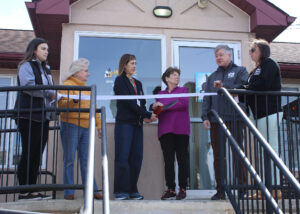 have been with HPA ranging from just one year to nearly twenty years. One person can’t succeed alone and we have built a group who take their work seriously and know they can make a concrete positive difference for the animals and people in our community.
have been with HPA ranging from just one year to nearly twenty years. One person can’t succeed alone and we have built a group who take their work seriously and know they can make a concrete positive difference for the animals and people in our community.
 When a mosquito has a blood meal from a dog that has adult heartworms, the microfilaria is taken in by the mosquito and undergoes transformation to a larval stage, which can now be a source of infection for another dog. This larval stage parasite is injected from the mosquito to another dog with the next blood meal the mosquito takes.
When a mosquito has a blood meal from a dog that has adult heartworms, the microfilaria is taken in by the mosquito and undergoes transformation to a larval stage, which can now be a source of infection for another dog. This larval stage parasite is injected from the mosquito to another dog with the next blood meal the mosquito takes.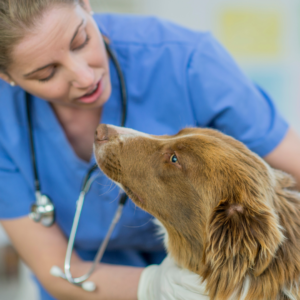 larval stage of the heartworm before it has the chance to mature into an adult worm and cause excessive damage.
larval stage of the heartworm before it has the chance to mature into an adult worm and cause excessive damage. Thursday, February 23, 2024, is World Spay Day, and
Thursday, February 23, 2024, is World Spay Day, and 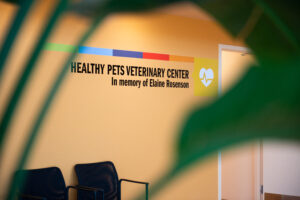
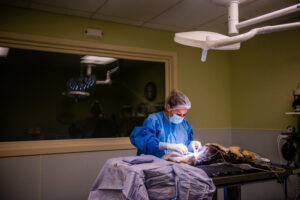
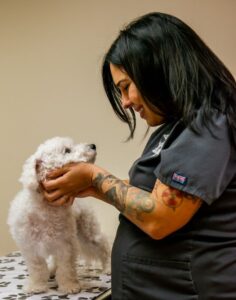 pets will prevent future costly issues such as uterine infections, cancers, and behavioral problems. For more information or to make an appointment, please visit our website:
pets will prevent future costly issues such as uterine infections, cancers, and behavioral problems. For more information or to make an appointment, please visit our website: 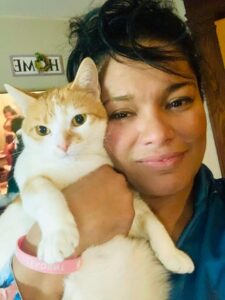

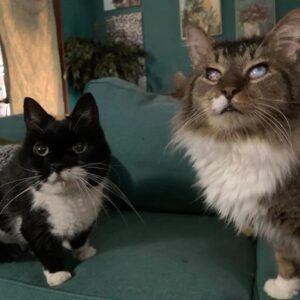 infection among other things. After her vet check, it was recommended to adopt her out as hospice care. I decided to adopt her knowing I might not have her for long. Sadly, she passed away four months later, but I made sure she spent the last few months of her life happy and loved.
infection among other things. After her vet check, it was recommended to adopt her out as hospice care. I decided to adopt her knowing I might not have her for long. Sadly, she passed away four months later, but I made sure she spent the last few months of her life happy and loved. One September morning a cat was abandoned at the shelter. We scanned the cat and found out she was adopted from our organization 15 years ago. She was frail and extremely underweight. Her name was Rapunzel but I called her Princess Thumbs because she was a polydactyl cat. After getting her blood work done it turned out that she had hyperthyroidism and needed to be on medication and a special diet. After doing some research about the disease, I adopted her. I was not sure of the outcome since she was so thin and I had no idea how long she was in this condition but I was determined to try. Unfortunately, her illness was too far gone, but she did give me two wonderful weeks. She was truly an amazing cat. I miss you, my crunchy princess.
One September morning a cat was abandoned at the shelter. We scanned the cat and found out she was adopted from our organization 15 years ago. She was frail and extremely underweight. Her name was Rapunzel but I called her Princess Thumbs because she was a polydactyl cat. After getting her blood work done it turned out that she had hyperthyroidism and needed to be on medication and a special diet. After doing some research about the disease, I adopted her. I was not sure of the outcome since she was so thin and I had no idea how long she was in this condition but I was determined to try. Unfortunately, her illness was too far gone, but she did give me two wonderful weeks. She was truly an amazing cat. I miss you, my crunchy princess.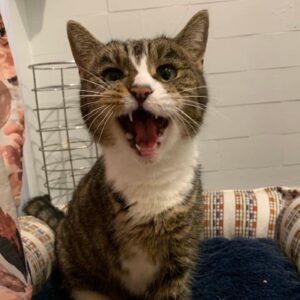 surrendered for meowing too much. Her name was Marigold. She was super sweet and did indeed “talk” a lot, which made me love her even more. After getting blood work done for her, results showed that she had hyperthyroidism. I was a little nervous because I was worried I would lose her too. I still decided to adopt her and give her a chance. Well, she is now a happy cat that “talks too much” if her bowl is empty. She will hop after you like a rabbit making sure you hear her loud and clear.
surrendered for meowing too much. Her name was Marigold. She was super sweet and did indeed “talk” a lot, which made me love her even more. After getting blood work done for her, results showed that she had hyperthyroidism. I was a little nervous because I was worried I would lose her too. I still decided to adopt her and give her a chance. Well, she is now a happy cat that “talks too much” if her bowl is empty. She will hop after you like a rabbit making sure you hear her loud and clear. During our annual 12 Days of Adoptions event during the holidays, the majority of the cats at the shelter were finding homes. There was one cat I was hoping would find her furever home since she had been overlooked for 8 months. Her name was Karma, an adorable Orange and white cat with the cutest “RBF” squishy face. Karma had a few medical issues. She was FIV+, had an old ankle injury that made her limp, and experienced bladder issues which would require a special diet and medication for life. When Christmas Eve and the last day of the adoption special arrived, I told Karma “It’s time to go home”. It’s been two months since she came home and I’m so happy I made that decision. Her health has since improved and she couldn’t be happier in her new home.
During our annual 12 Days of Adoptions event during the holidays, the majority of the cats at the shelter were finding homes. There was one cat I was hoping would find her furever home since she had been overlooked for 8 months. Her name was Karma, an adorable Orange and white cat with the cutest “RBF” squishy face. Karma had a few medical issues. She was FIV+, had an old ankle injury that made her limp, and experienced bladder issues which would require a special diet and medication for life. When Christmas Eve and the last day of the adoption special arrived, I told Karma “It’s time to go home”. It’s been two months since she came home and I’m so happy I made that decision. Her health has since improved and she couldn’t be happier in her new home.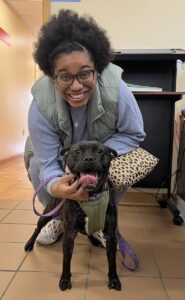
 Volunteer Your Time
Volunteer Your Time
 I joined Humane Pennsylvania (then Humane Society of Berks County) as executive director nearly twenty years ago. I had previously worked at a larger and better-funded animal shelter. But when I compared the output of the two organizations, I was surprised to find our little animal shelter did more and provided more of some services than the other, bigger shelter, despite having fewer resources.
I joined Humane Pennsylvania (then Humane Society of Berks County) as executive director nearly twenty years ago. I had previously worked at a larger and better-funded animal shelter. But when I compared the output of the two organizations, I was surprised to find our little animal shelter did more and provided more of some services than the other, bigger shelter, despite having fewer resources.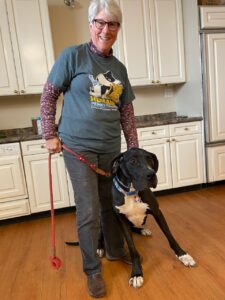
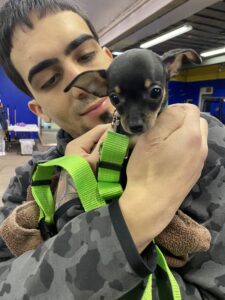 Our innovative veterinary services deliver tens of thousands of client visits, surgeries, and services to animals and people from all walks of life and economic circumstances each year. Our pet food pantry distributes a couple hundred thousand pounds of food and supplies annually. We have created programs that do more and do it more effectively than places that are entirely out of our league in size and resources.
Our innovative veterinary services deliver tens of thousands of client visits, surgeries, and services to animals and people from all walks of life and economic circumstances each year. Our pet food pantry distributes a couple hundred thousand pounds of food and supplies annually. We have created programs that do more and do it more effectively than places that are entirely out of our league in size and resources.
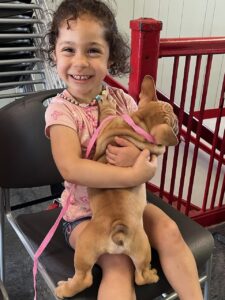 are sustainable, and serve the current needs of our community rather than past needs. These include:
are sustainable, and serve the current needs of our community rather than past needs. These include: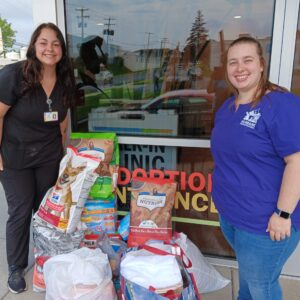
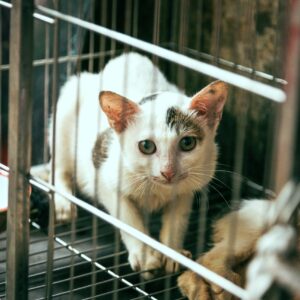

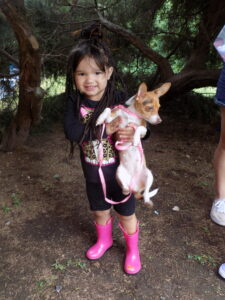 These initiatives will help more animals and people, save lives, save resources, and serve as models for other organizations who might look to us for inspiration, just as we look to others for new ideas and approaches. Every year (month, day!), the world changes, and the needs of animals and people in our community change, too. You can’t be prepared for everything, but a culture of growth and innovation makes it easier to respond to the unexpected and to change paths when needs change. That path has helped us survive major economic downtowns and a pandemic. It’s also allowed us to recognize needs and problems before they are widely recognized as such.
These initiatives will help more animals and people, save lives, save resources, and serve as models for other organizations who might look to us for inspiration, just as we look to others for new ideas and approaches. Every year (month, day!), the world changes, and the needs of animals and people in our community change, too. You can’t be prepared for everything, but a culture of growth and innovation makes it easier to respond to the unexpected and to change paths when needs change. That path has helped us survive major economic downtowns and a pandemic. It’s also allowed us to recognize needs and problems before they are widely recognized as such.